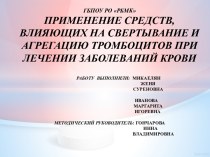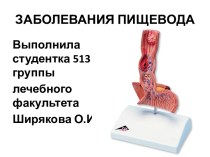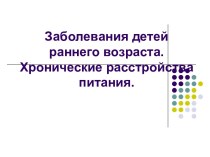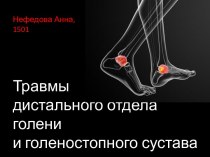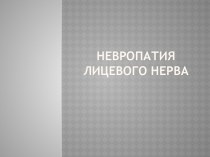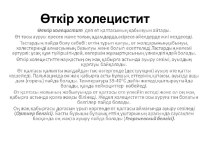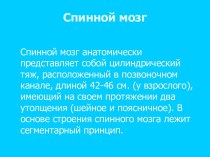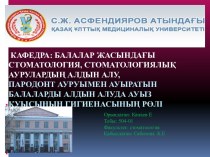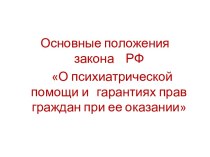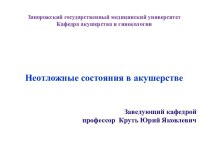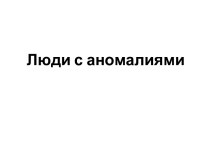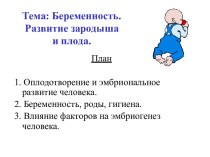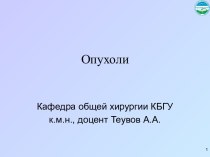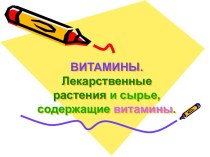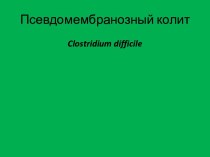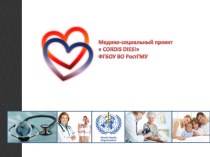- Главная
- Разное
- Бизнес и предпринимательство
- Образование
- Развлечения
- Государство
- Спорт
- Графика
- Культурология
- Еда и кулинария
- Лингвистика
- Религиоведение
- Черчение
- Физкультура
- ИЗО
- Психология
- Социология
- Английский язык
- Астрономия
- Алгебра
- Биология
- География
- Геометрия
- Детские презентации
- Информатика
- История
- Литература
- Маркетинг
- Математика
- Медицина
- Менеджмент
- Музыка
- МХК
- Немецкий язык
- ОБЖ
- Обществознание
- Окружающий мир
- Педагогика
- Русский язык
- Технология
- Физика
- Философия
- Химия
- Шаблоны, картинки для презентаций
- Экология
- Экономика
- Юриспруденция
Что такое findslide.org?
FindSlide.org - это сайт презентаций, докладов, шаблонов в формате PowerPoint.
Обратная связь
Email: Нажмите что бы посмотреть
Презентация на тему Asepsis Department of General Surgery
Содержание
- 2. The measures to prevent an
- 3. HISTORY:The modern concept of asepsis evolved in
- 4. SOURCE OF INFECTION
- 5. SURGICAL HOSPITAL’S STRUCTURE A surgical hospital contains the
- 6. FUNCTIONAL ZONES IN THE SURGICAL BLOCKThe sterile
- 7. The compounds that have antibacterial effects fall
- 9. PREVENTION OF MICROORGANISMS' CONTACT WITH THE
- 10. STERILISATION OF INSTRUMENTS Stage 1 - preparation of
- 11. It is noteworthy that the equipment used
- 12. Stage 2 - arrangement and package for
- 13. Stage 3 - sterilisation. Sterilisation of instruments,
- 14. Stage 4 - Keeping the sterilised materials.
- 15. STERILISATION OF DRESSING MATERIALS, OPERATING SHEETS AND
- 16. Stage 2 - package and preparation of
- 17. Stage 3 - sterilisation. • The equipment
- 18. Stage 4 - keeping the sterilised materials.
- 19. CONTROL OF STERILITY Direct methods Inoculation of
- 20. SUTURING MATERIAL Natural resolvable threads
- 21. Wound infection rarely occurs when suturing material
- 22. PREPARATION OF THE HANDS FOR OPERATION Scrubbing
- 23. CLEANING THE OPERATIVE FIELD Preparation of the place
- 24. Скачать презентацию
- 25. Похожие презентации
The measures to prevent an infection from entering a wound are referred to as asepsis, while those to cause the exclusion or destruction of harmful microbes are generally called antisepsis.
























Слайд 3
HISTORY:
The modern concept of asepsis evolved in the
19th century.
Ignaz Semmelweis (washing hands)
Joseph Lister (use
of carbolic acid as an antiseptic) Lawson Tait (went from antisepsis to asepsis)
Ernst von Bergmann (autoclave)
Слайд 5
SURGICAL HOSPITAL’S STRUCTURE
A surgical hospital contains the main
functional blocks which are as follows:
a surgical block
surgery
departmentsplaster
treatment rooms
dressing-rooms.
An operating unit houses special rooms for operating on patients. It has to be isolated from surgery departments on a separate floor or detachment of the building and be connected with the them by a corridor.
Слайд 6
FUNCTIONAL ZONES IN THE SURGICAL BLOCK
The sterile zone
(the operating theatre, scrub-up room, and the room for
sterilisation.)The clean zone (the rooms for personal hygiene and changing clothes of the staff)
The technical zone (the rooms where apparatus for air-conditioning or oxygen supplying and vacuum devices are stored.)
The dirty zone (the sister's room, the room of the head of surgery and the one for dirty clothes etc.)
Слайд 7 The compounds that have antibacterial effects fall into
two main groups - chemotherapeutic agents (see «Antiseptics») and
chemical agents for disinfection and sterilisation.Among the chemical agents for disinfection and sterilisation commonly used in surgical practice are as follows:
Слайд 9
PREVENTION OF MICROORGANISMS' CONTACT WITH THE WOUND
Sterilising instruments,
operating sheets, towels and dressing materials involves the following
stages:preparation of the materials,
preparing for sterilisation itself,
sterilisation,
safe-keeping of the materials sterilised.
All these stages are to be performed in accordance with specific standards «Sterilisation and disinfection of materials for medical use».
Слайд 10
STERILISATION OF INSTRUMENTS
Stage 1 - preparation of the
materials - is aimed at thorough mechanical cleansing of
instruments; removal of pyogenic compounds and destruction of hepatitis viruses. The instruments that were used but not infected will be washed under running water separately with a brush for 5 minutes. In contrast, blood-stained equipment must be washed immediately (without subsequent drying!), then soaked in one of special washing solutions, warmed to a temperature of 50 °C for 15-20 minutes, syringes being dismantled before washing.The formulations of the washing solutions are as follow
Solution A (Perhydrol - 20 g washing detergent - 5 water - 975 ml. ) • Solution B (2,5% hydrogen peroxide - 200 ml washing detergent - 5 water - 795 ml. )
The instruments contaminated with pus or intestinal contents are first soaked in enamel containers with 5% lysol for 30 minutes, then washed in the same solution with brush, rinsed with running water and soaked in one of the washing solutions.
.
Слайд 11 It is noteworthy that the equipment used to
operate on patient with anaerobic infection should be soaked
in a special solution that contains hydrogen peroxide (6%) and washing agent (0,5%) for 1 hour, then washed with a brush in the same solution before boiling for 90 minutes (it is only after this that the instruments will be ready for thorough sterilisation as is the case with instruments which have not been infected).To make sure the materials are free of blood stains following presterilisation, the benzidine test is applied. Three drops of 1% benzidine and hydrogen peroxide are put on the material or instrument tested; a bluish-green coloration suggests the presence of blood. This requires that washing (stage 1) be repeated.
Слайд 12 Stage 2 - arrangement and package for sterilisation.
For sterilisation in an air-drying steriliser the instruments are
arranged in a metallic box, vertically and in one layer with the lid open but lying by its side. For the sterilisation in an autoclave (steam under pressure) the instruments are wrapped into cotton cloth made into bag and arranged on a metal tray or net. Sets of instruments for typical operations on the heart, lung, bone, vessels are sterilised together; they are arranged on special trays and wrapped in sheets.Слайд 13 Stage 3 - sterilisation. Sterilisation of instruments, glass
containers is done with an dry-air oven . The
materials are freely arranged on the steriliser's shelf and the apparatus switched on. With its doors open the steriliser is heated to a temperature of 80-85 °C to dry its interior and the instruments for 30 minutes. The doors are then closed and the temperature increased to 180 °C and maintained automatically; within 60 minutes the materials are sterilised. After switching off and cooling to 70-50 °C the door is opened, the metal container with the instruments is covered with its sterile lid. Within the next 15-20 minutes when the steriliser is cool the materials can then be removed.Surgical instruments are sterilised within 20 minutes at 2 atmospheres (1 atmosphere = 1,013 x105 pa) which is the equivalent of 132,9 °C. The starting time for sterilisation is counted from the start of the required pressure Sterilisation of instruments that cannot stand heat (endoscopes, thoracoscopes, laparoscopes, the set of instruments used for artificial blood circulation or for heart-lung bypass), are done in special gas sterilises. Materials for sterilisation are put in airtight sterilisation chambers filled with ethylene dioxide. Exposition time is 16 hours with the temperature of 18 °C. A mixture of ethylene dioxide and methylene bromide under the temperature of 55 °C can also be used to sterilise within 6 hours.
Слайд 14 Stage 4 - Keeping the sterilised materials. Sterile
materials are kept in special containers. Sterile and non-sterile
items may not be kept at the same container. Materials can stay sterile in a dressing box, which has not yet been opened for 48 hours. If before packing in the dressing box the materials were wrapped in (towels, sheets or napkins) as is the case with rubber drains), then they can stay sterile for 3 days. In cases of centralised sterilisation syringes can be sterile for 25 days.Слайд 15 STERILISATION OF DRESSING MATERIALS, OPERATING SHEETS AND SUTURING
MATERIALS
Stage 1 - presterilisation. Dressing materials include gauze balls,
towels, pack, and swabs. They have to have the following characteristics:
1) they should be biologically and chemically inert and void of any negative effects on wound healing;
2) they should have good hygroscopic, or water absorbing, properties;
3) they should have a few free threads from outside; this will prevent pieces of thread from falling into the wound as these can act as foreign bodies in the wound;
4) they should be soft, elastic and not traumatise the wound;
5) they should be easy to sterilise without loosing its qualities;
6) they should be cheap, considering its wide use. Annually, 200 metres of gauze and 225 pieces of bandage are normally spent per a surgical bed.
Слайд 16 Stage 2 - package and preparation of materials
for sterilisation. Dressing materials and operation sheets are packed
in special containers (dressing boxes). When the items for sterilisation are packed in a bag, they should not be arranged too tight, and the bag is tied with a special metallic tie. The bag is put into another bag and tied. When it is necessary to use the sterilised materials in the bag, it is placed on a table; the nurse assistant opens the first bag and pulls it down. The theatre nurse then opens the inner bag with sterile hands and removes the sterile items from it.Слайд 17 Stage 3 - sterilisation. • The equipment must be
earthened. • Faulty equipment should never be used. • When in
use, the equipment should be under control. • Do not add water after the equipment has been switched on.After sterilisation the apparatus should be switched off, and the ventilator closed not to let any more air into the sterilisation chamber.
The cover of the sterilisation chamber is opened only when the arrow of the manometer has reached the zero mark.
Sterilisation time is counted from the time when the manometer reaches the required pressure. Dressing materials and operation sheets are sterilised for 20 minutes at 2 atmospheres (temperature 132,9 °C).
Слайд 18 Stage 4 - keeping the sterilised materials. After
sterilisation ends the sterilisation chamber is emptied, dressing boxes
are removed, all openings are immediately closed and brought to a special table for sterile materials. Dressing boxes are kept locked in a special room. With an intact dressing box dressing materials and sheets can stay sterile for 48 hours after sterilisation has completed. Dressing materials and sheets sterilised in the bag can stay sterile for only 24 hours.
Слайд 19
CONTROL OF STERILITY
Direct methods
Inoculation of medium with
a swab of the dressing material.
To inoculate medium with
a swab, open the dressing box in the operating theatre, using a sterile instrument. Soak a piece of sterile gauze in normal saline which is passed several times on the material to be tested, then drop the piece of gauze into a sterile test tube and send it to the microbiological laboratory Bacteriological tests.
A test tube that contains reference non-pathogenic cultured microorganisms known to die, if exposed to a certain temperature, is used. Place the test tube inside the dressing box and send it to the laboratory after sterilisation is over. Absence of bacterial growth implies that the items are sterile. The swabs should be taken from once every 10 days.
Indirect methods
Control of sterility of materials is done each time they have been sterilised. Compounds with known specific melting points are used for this purpose: benzoic acid (120 °C), resorcinol (119 °C), antipyrin (110 °C). These compounds are kept in ampoules. One or two ampoules are placed in between the layers of materials to be sterilised. Melting of the powdered compound into a liquid mass implies that the temperature in the box was at least as high as the melting point of the compound. Thermometry is the most objective indirect methods of sterility control. In each dressing box 1 or 2 thermometers are placed in between the layers of materials to be sterilised. The readings will indicate the maximum temperatures but not the exposition time.
Слайд 20
SUTURING MATERIAL
Natural resolvable threads are made
of catgut. To lengthen the resolution time of catgut,
metallic compounds are impregnated into them (chromic and silver catguts). The examples of synthetic resolvablesutures are dexon, vicryl and oxylon.Non-resolvable natural sutures include sutures made of natural silk, cotton, yarn; their synthetic equivalents are dacron, nylon, ftolon, silk, kapron, etc. Suturing material should meet the main requirements as follows:
• have smooth level surface without causing additional damage to the tissues;
have good manipulating qualities - slip easily through tissues;
be elastic (sufficient elasticity prevents tissues from being pressed on and necrotized when they subsequently become oedematous);
be firm at the knots;
be non-hygroscopic and not swell up;
be biologically compatible with bodily tissues and not be allergic to the body.
Слайд 21 Wound infection rarely occurs when suturing material with
antimicrobial activity is used, this is achieved by incorporating
into the sutures the antibacterial compounds. Synthetic sutures that contain antiseptics both possess all the qualities of clean materials and cause antibacterial effect. Sutures can be sterilised with gamma rays by manufacturers. Silk or catgut sutures in ampoules can be kept at room temperature. Metallic suturing materials are sterilised in the autoclave or can be boiled while cotton sutures, lavsan, kapron may be sterilised in an autoclave. Silk, kapron, lavsan, linen, cotton are sterilised by Kocher's method. Catgut is treated with iodine steam, in alcohol solution of Lugole or in water solution of Lugole. Bacteriological control each time is obligatory.
Слайд 22
PREPARATION OF THE HANDS FOR OPERATION
Scrubbing of the
hands is a very important way of preventing infection.The
nails should always be trimmed and short. Whenever very dirty work is to be done manually, gloves should be it is better to worn. Taking good care of the hands should be regarded as a step in the preparation for operation. • Chlorhexidine (0,5% alcohol solution) The hands (the finger up to the midforearm) are smeared with gauze swabs soaked in the solution of chlorhexidine for about three minutes; prior to this the hands are washed with soap for a minute. • AHD solution and Eurosept These solutions contain the antiseptics such as ethanol, chlorhexidine, and polyiolic fatty acid ether. The hands are first washed with soap and running water for a minute. A few millilitres of the solution are then poured onto the hands twice and rubbed for 2-3 minutes each. The hands can also be cleansed by rubbing the hands with 96% ethyl alcohol for 10 minutes (Brun's method).
Слайд 23
CLEANING THE OPERATIVE FIELD
Preparation of the place of
the expected incision (operative field or site) starts on
the day preceding the operation, which includes hygienic baths and a change of underwear. On the day of operation, the skin of the expected place of incision is dry-shaved and cleaned with alcohol.Immediately before the operation, on the operating table, the operative field is abundantly smeared with 5% alcohol solution of iodine. The operation site itself is isolated with sterile towels and again smeared with 5% alcohol solution of iodine. Before suturing, the skin is smeared with 5% alcohol solution of iodine and repeated after the suturing. This is known as Grossich-Filonchikov's method.
In a patient allergic to iodine the skin can be prepared with brilliant green (Bakkal's method). On the operating table, the operation site can be can be prepared with derivatives of iodine such as iodonate, povidon-iodine, betadin.
